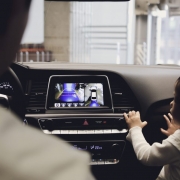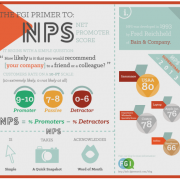Technology Trends That Will Inform Ad Strategy In 2019 And Beyond
POST WRITTEN BY
Jessica Hawthorne-Castro
Jessica Hawthorne-Castro is CEO of Hawthorne, an analytics and technology-driven accountable advertising agency.
Getty image
Many trends will inform ad strategy in 2019 and beyond. Below are five big market movements that stood out.
1. TVs Are Now In 8K
Tech conferences like the Consumer Electronics Show (CES) 2019, which I attended earlier this year, displayed a wonderland of ultra HD TVs. The newest devices have 16 times more pixels than previous models. Full HD has two million pixels, but 8K has an impressive 33 million pixels, delivering ultra-crisp detail. With the prices for 65- to 80-inch sets coming down, jumbo-sized TVs are within reach for more consumers. It’s expected that 430,000 8K TVs will ship globally in 2019, meaning that people continue to be committed to their TVs and can be reached through them with offline advertising.
What won’t change is brands expanding their reach via traditional cable, connected TV and over the top (OTT) platforms. The TV people watch is evolving, with 33 million adults becoming “cord cutters” in 2018, according to eMarketer; By 2022, eMarketer predicts (registration required) 60% of U.S. residents will use connected TV devices. Thanks to the precision of advanced TV technology, marketers can closely target their desired audiences and optimize their spend.
The strength of TV advertising, aligned with new media channels delivered through smart TVs, will deliver insight-rich attribution. Both online and offline advertising platforms will continue to refine their attribution techniques to prove measurability. We can expect TV networks to roll out products that measure business results rather than traditional Nielsen demographics.
2. 5G, 600 MHz Will Expand Tech Usability
In 2019, 5G will likely become more widespread, pushing established technology forward. This means that all devices that operate on 5G — once called life-changing — will be functionally usable. 5G will support extremely high speeds and longer battery life and will make networks more responsive at high speeds.
The advancement of these technologies leads to more platforms for advertisers. They can use them to engage consumers more deeply, delivering highly personalized experiences with targeted and trackable messaging, as well as more innovative products to market, such as wearables, health care technology and more.
For example, wearable technology will quickly connect someone who struggles with sleeping to products that will help them get a better night’s rest. VR/AR will allow advertisers to create immersive experiences around their products within a game, without disrupting the experience. Connected home devices will enable brands to deliver convenience by proactively suggesting products that need to be replenished. EMarketer predicts that AR advertising revenues will jump from $428 million in 2018 to $2.6 billion in 2022.
3. Voice Is Taking Over The Connected Home
At CES, evidence of the massive impact and growth of voice technology was everywhere. There has been some press about flaws in connected home technology, such as products that accidentally (or purposely) watch or listen to consumers. However, more than half of U.S. households are expected to have smart speakers by 2022, according to Juniper Research.
As consumers increasingly engage with technology via voice, and as voice search increases in adoption, brands may begin to invest heavily in voice marketing strategies. Competing with Amazon will be tough, but voice must be part of any forward-thinking marketing strategy. It extends ways that products and services can be top of mind to consumers with personalized recommendations and feedback — a voice-driven concierge service.
4. Big Brands Dig Into Direct-To-Consumer
An article in Marketing Land described CES as “an ode to today’s direct-to-consumer marketplace and technology providers, with the media and entertainment industry peppering in the advertising innovation to make it all go.” Why are direct-to-consumer (D2C) brands having such a moment? Today’s brands are striving to collect their own first-party data in the face of second- and third-party data that can be inaccurate and increasingly expensive.
D2C brands succeed by building direct, engaged relationships with their customers with stronger measurability and a greater focus on lifetime value and re-engagement with their brands or new services. As they experiment with innovative marketing strategies, established brands will do the same to keep up. They may also look to acquire existing D2C brands and/or invest in startups.
CES 2019 also gave a preview of how the D2C model is expanding into other sectors, like entertainment and health care. In health care, for example, D2C could enable brands to modernize how they deliver things like prescriptions — if they can overcome complex compliance hurdles, that is.
5. Artificial Intelligence Will Enable Personalization At Scale
CES 2019 showed how artificial intelligence will influence every aspect of our lives. During her opening keynote, IBM chair, president and CEO Ginni Rometty said that AI will prove data to be the “world’s greatest natural resource.” From health care to smart cities to advertising, AI is enabling personalization on a degree never before possible.
These days, customers expect brands to understand what they’re interested in, their position in the customer journey and their relationship with the brand. This matters, as an Accenture report revealed that over 40% of consumers switch brands due to lack of personalization.
Brands have to deliver personalized, omnichannel experiences to survive in today’s environment, which is why they’re pushing forward with AI spending and integrating it into their customer experiences. AI can do “the heavy lifting” of agile product development and personalization to deliver highly relevant content to consumers.
In summary, the evolution of advertising and the technology industry have always gone hand-in-hand. As the ways people seek out information, consume media and entertainment, shop, and navigate the world change, so do the ways that marketers and advertisers try to engage them. In 2019, technological advancements around 8K TVs, 5G, voice technology, D2C and artificial intelligence will push the advertising industry forward, enabling brands to deliver messages that meet consumers where they are and provide more convenient, personalized, omnichannel experiences.











